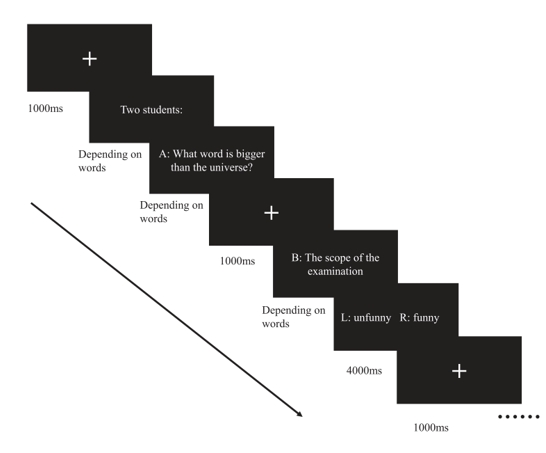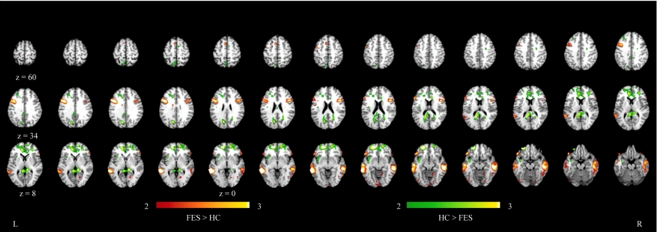Humor processing is a complex social cognition with high-order emotional experience unique to human beings. Its underlying cognitive process consists of expectation, incongruity detection, resolution and appreciation. Drs. HUANG Jia and Raymond Chan from the Neuropsychology and Applied Cognitive Neuroscience (NACN) Laboratory, Institute of Psychology have previously found that individuals with high levels of social anhedonia exhibited deficits in humor processing. Compared to the controls, individuals with high levels of social anhedonia exhibited higher threshold of humor appreciation instead of humor signal detection. Despite the fact that patients with schizophrenia show both poorer humor signal detection and appreciation compared to controls, the neural mechanism of these deficits remains unclear.
In order to address such an issue, Drs. Jia HUANG and Raymond Chan, and collaborators from Peking University Sixth Hospital further conducted a study to examine neural mechanism of humor processing in patients with first-episode schizophrenia (FES). They administered a fMRI verbal humor paradigm to 40 patients with FES and 31 healthy controls to evaluate their humor processing. The task comprised 96 stories, half for funny punch-line condition and the other half for unfunny condition. The participants have to indicate whether the story was funny or not by pressing the keys.

Fig1: trial illustration of humor processing task
Findings from signal detection analysis showed that patients with FES exhibited significantly lower hit rate and sensitivity of humor signals (d'). At the neural level, patients with FES exhibited hypo-activation in ventral medial prefrontal cortex (vmPFC) and anterior cingulate cortex (ACC) but hyper-activation in middle temporal gyrus (MTG) and superior temporal gyrus (STG) compared to controls. In addition, brain activations in vmPFC and ACC were positively associated with d’ and β values, while activation in STG was positively associated with β values in FES patients.

Fig2: Differences in regional activation for funny vs unfunny conditions between patients with first episode schizophrenia (FES) and healthy controls (HC) during humor processing (p < 0.001; k > 39, MC corrected p < 0.05).
Taken together, these findings suggest the reduced sensitivity of patients with FES towards humor signals. Hypo-activations in frontal regions and hyper-activation in temporal regions were associated with the humor processing deficits. These underlying neural substrates of humor processing deficits in FEP SZ may be important putative neural mechanism and potential intervention targets for schizophrenia spectrum disorders. Dr. HUANG’s team is now taking a humor cognitive training approach to examine the effects of cognitive intervention in schizophrenia patients. They hope these findings will open a new window to understand the complex social cognition in psychiatric disorders.
This study was published online on Dec. 23, 2023 in Asian Journal of Psychiatry
- Huang, B., Pu, C., Guo, X., Chan, R. C. K., Huang, J.,* Yu, X*. (2024). "Hypo- and hyper-activation in frontotemporal lobe during humor processing in patients with first episode schizophrenia." Asian Journal of Psychiatry. 92.
Related publication:
- Liu, B. H., Huang, J.,* Shan, H. D., Liu, Y. F., Lui, S. S. Y., Cheung, E. F. C., Yue, X. D., Chan, R. C. K. (2019). "Humour processing deficits in individuals with social anhedonia." Psychiatry Res. 275: 345-350. DOI: 10.1016/j.psychres.2019.04.005
LIU Chen Institute of Psychology
Chinese Academy of Sciences
Beijing 100101, China.
E-mail: liuc@psych.ac.cn
